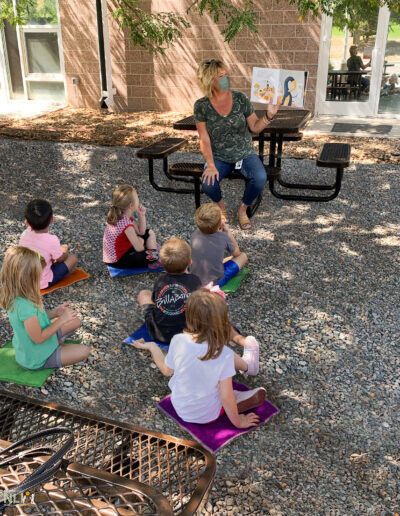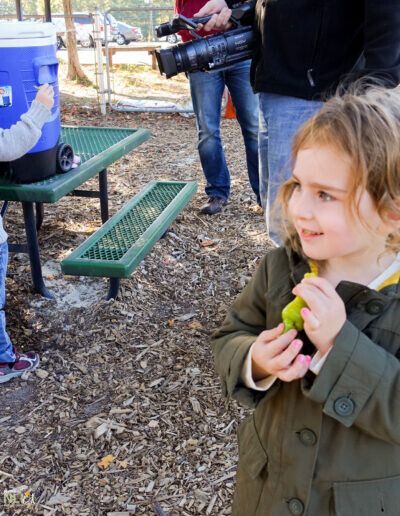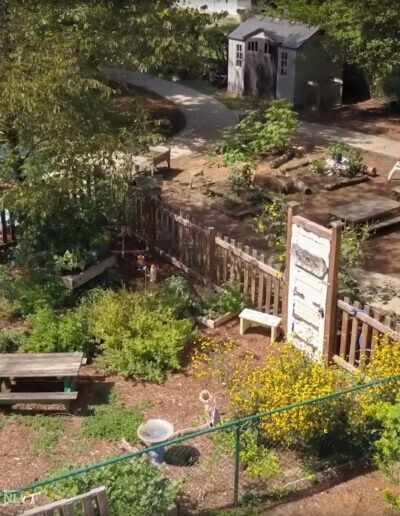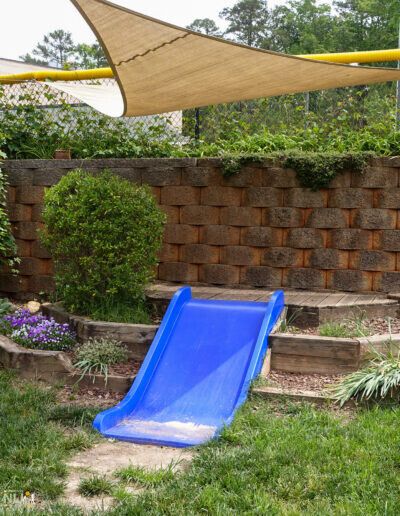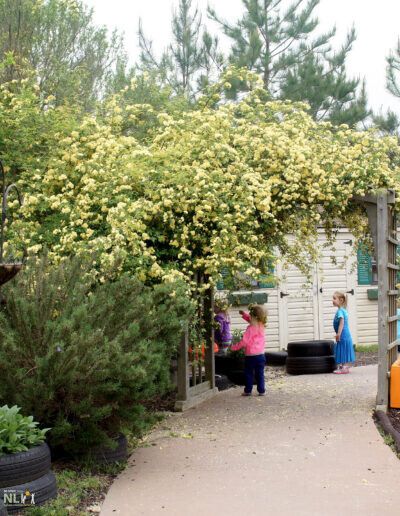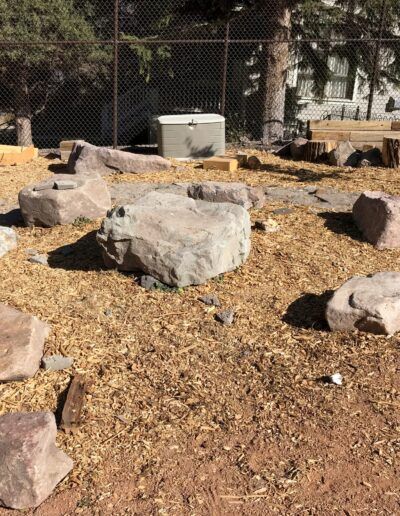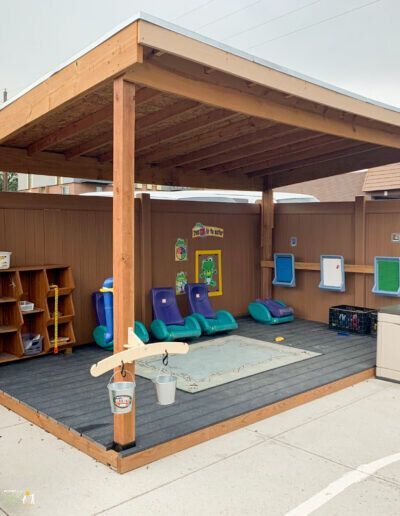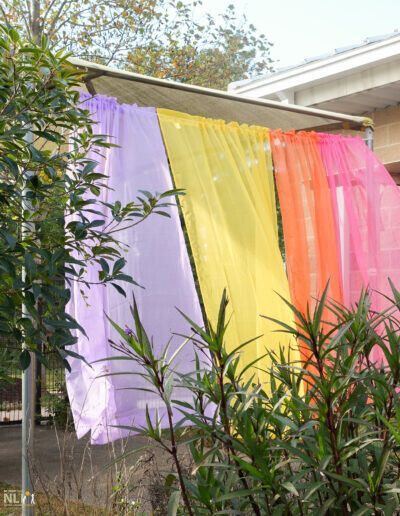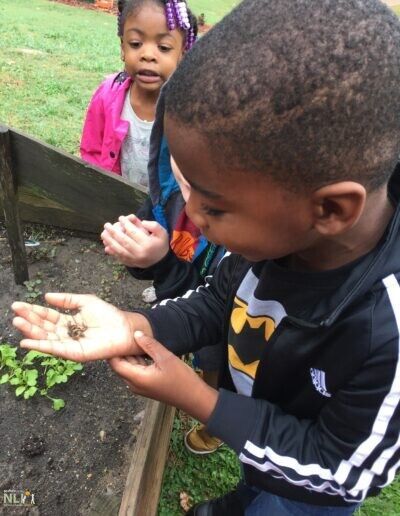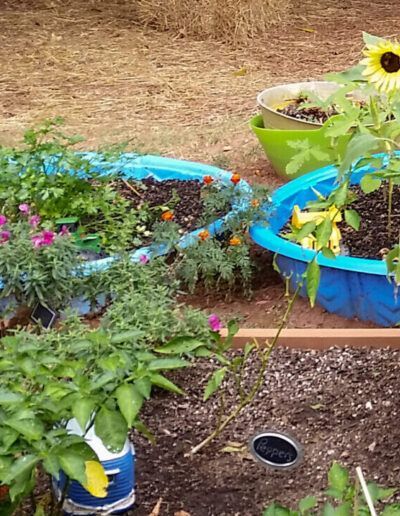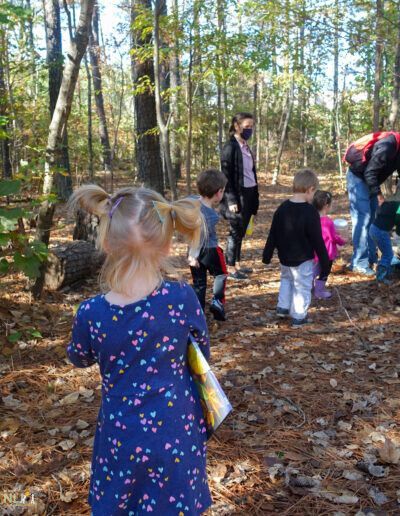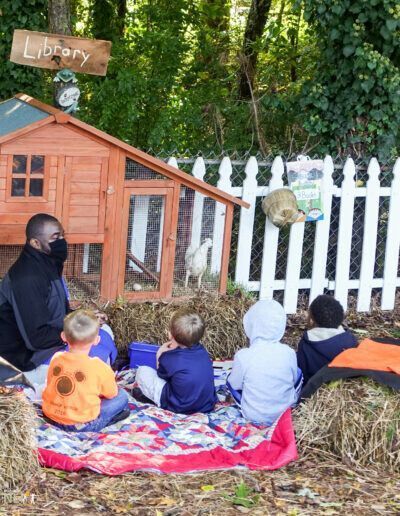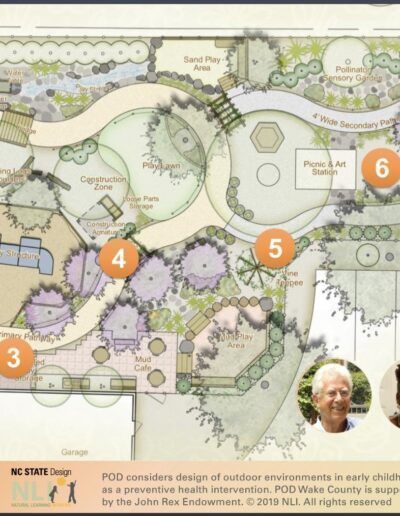Publications
LET’S GET OUTSIDE! Providers
Reduce risk of disease and improve health during COVID-19—and beyond
Authors: Natural Learning Initiative & National Wildlife Federation
Risk of spreading COVID-19 may be reduced if children and teachers spend more time outside. The American Academy of Pediatrics (AAP) says that spending more time outdoors is one of the highest priority strategies for reducing transmission of the virus among preschoolers and elementary school children. Studies suggest that exposure to sunlight rapidly deactivates the virus in the air and on surfaces. Open-air spaces are less likely to concentrate the virus than confined indoor spaces and outdoor moving air disperses the virus, lowering the risk of transmission.
Decades of research also show that spending time outside in nature supports healthy child development by increasing physical activity, supporting healthy eating through hands-on gardening, reducing stress, and enhancing social-emotional development. For evidence supporting enhanced outdoor spaces at child care centers, see Benefits of Engaging Children with Nature and this Research Brief.
While the immediate and long-term benefits of time outside in child care settings are clear, the large majority of child care facilities are not designed and managed to support long durations of outside time to engage young children and their providers. This resource offers suggestions to immediately enhance child care outdoor spaces, through low-cost improvements and programming, to make them healthy, comfortable, and engaging.
HEALTHY
The suggestions below promote health and aim to reduce the likelihood of COVID-19 transmission. Please adhere to best practices for hygiene, sanitation, and disinfection routines for adults and children based on the latest local or state rules, evidence-based standards, and the latest CDC guidance for child care, while noting any rules or guidance for outdoor areas or materials.
Create groupings or “cohorts.” Given the challenges of individual physical distancing and mask-wearing for young children, both the AAP and CDC suggest establishing stable groups of children and adult(s), called cohorts. This approach aims to prevent mixing between groups while allowing for social interaction within groups. It can be combined with time outdoors adhering to local or state guidelines for personal protective equipment and sanitation (1).
Handwashing stations. The CDC stresses the importance of handwashing with soap and potable running water (routine children often learn to self-administer early on as a personal hygiene habit), and recommend soap and water over the use of hand-sanitizer. Outdoor handwashing stations can include a large water dispenser (5- or 10-gallon) with soap in a net bag and paper towels located nearby. Hand hygiene advice is available from the CDC (2).
An assortment of activity settings is key to successful cohorts by providing diverse activities. To facilitate group separation, rotate outdoor use for each cohort or, with sufficient space, create subdivisions serving individual cohorts, using low fences, plantings, snow fencing, hanging textiles, or light shower curtains (3). Cohorts could wear matching clothing to increase a sense of belonging and help providers prevent mixing.
Shade/rain cover. While sunlight can play an important role in deactivating the virus that causes COVID-19, over-exposure to UV rays is itself a health risk. Sun must be balanced with shade, which is crucial for summer comfort. Balance can be created with scattered patches of shade that protect children while allowing the sun to penetrate. Although tree planting is a long-term shade solution with added educational value, during the pandemic, a mix of shade sails, tents, umbrellas, pergolas, arbors, and roof structures can provide protection from sun, rain, and wind (4, 7).
COMFORTABLE
Aim to make time outside more comfortable—physically, socially, and psychologically—for both children and providers.
Facilitate circulation between activity settings. Provide easy-to-follow routes that can facilitate the cohort approach for both providers and children. Designated pathways need to be wide enough for groups to move quickly, following “one-way” rules (5).
Seating for providers supports positive social relations between children as well as providing comfort. Traditional benches (1) can be mixed with stones (6), hammocks, and other creative installations for providers and children to sit, lounge, or lean on.
Nearby storage is essential for outdoor play and learning. Items need to be close at hand to enrich activities associated with particular settings and can also house disinfecting or cleaning materials securely away from children. Moveable deck boxes and similar inexpensive off-the-shelf units serve these purposes well (7).
ENGAGING
As time outside is increased, child care providers can find ways to both improve outdoor space and activate it with intentional programming to engage children and providers.
Provide a diversity of play and learning choices to keep children creatively engaged day after day. These include short term, seasonally meaningful, low-cost improvements that encourage both spontaneous, imaginative play and types of outdoor learning activities more difficult to conduct indoors such as musical parades, outdoor art, large-scale construction projects, traditional games, and many other activity setting ideas. Visual or structural dividers can add playful interest and help separate cohorts while ensuring that users can see and hear each other from adjacent settings (8).
Nature in its many forms offers more choices for creative, active play, and expands the range of options for activity settings. Planting insect-attracting, flowering perennials or ornamental grasses is a low-cost way to begin naturalizing child care outdoor spaces and to entice nature observations. Choose plants with persistent seeds and fruits that are interesting year-round (9). Add birdhouses to attract friendly wildlife.
Fruit and vegetable gardening, in compliance with state child care and health regulations, is an inexpensive way to introduce health-supporting nature and increase learning value year-round in some locations, where both ‘warm-season’ and ‘cool season’ vegetables can be grown. Use repurposed containers for quick installation (10). For programs in southeastern states, refer to the NLI/Cooperative Extension Childcare Gardening Series. Other useful resources include Making Newspaper Seedling Pots, Starting Veggies Indoors, and Growing Edibles in Containers. Consider also planting permanent fruit trees and shrubs.
Repurposing closed areas. If playground equipment use is not allowed during COVID-19, parts of the setting may be used while still following the rules. Settings with movable features and large use-zones, like swings, may be repurposed for other activities once swing seats have been tied up out of children’s reach. Climbing structures can be draped with textiles and converted into ground-level playhouses with a lower density of use and reduced high-touch surfaces. If sand play is restricted, a safe, stable platform can be placed above the sand to create a surface for play with natural objects.
For centers where licensed space is tight, consider contiguous spaces beyond the licensed area that could be enclosed and repurposed temporarily, including woodlands (11), adjacent fields, or as a last resort, a section of the parking lot. Taking walking field trips to nearby parks with parental consent could become an engaging weekly activity.
Innovative play and learning programming can help providers engage children in new outdoor settings for longer periods of time (12). Especially in response to COVID-19, providers may benefit from supportive training, tools, and resources to encourage spending more enjoyable time outside during a substantial part of the day. Online professional development support such as webinars, training, and networks of practitioners are available through ECHO and NLI (13).
TAKE THE FIRST STEP…
It doesn’t take much to create healthy, comfortable, and engaging outside spaces for young children! Take your first step to enhance and use your outdoor sites every day with help from ECHO and NLI. We invite you to share your progress with us (echo@nwf.org and @naturalearning).
Disclaimer
Disclaimer: The Natural Learning Initiative (NLI), NC State University, the National Wildlife Federation, their partners, and supporting entities assume no responsibility for consequences arising from physical interventions using information contained in this document. Under no circumstances will liability be assumed for any loss or damage, including without limitation, indirect or consequential, incurred during installation, management, and use of such interventions. Highly recommended is adherence to relevant local, state, and national regulatory requirements concerning but not limited to health and safety, accessibility, licensing, and program regulation.
¹ This document is produced by the National Wildlife Federation’s Early Childhood Health Outdoors (ECHO) program and North Carolina State University’s Natural Learning Initiative (NLI). It is one of a series, targeting child care providers and regulators respectively, addressing COVID-19 transmission reduction in child care facilities by increasing time outside. A third document presents the case for outside time as a broad strategy for reducing risk of COVID-19 spread for children and accompanying adults.

